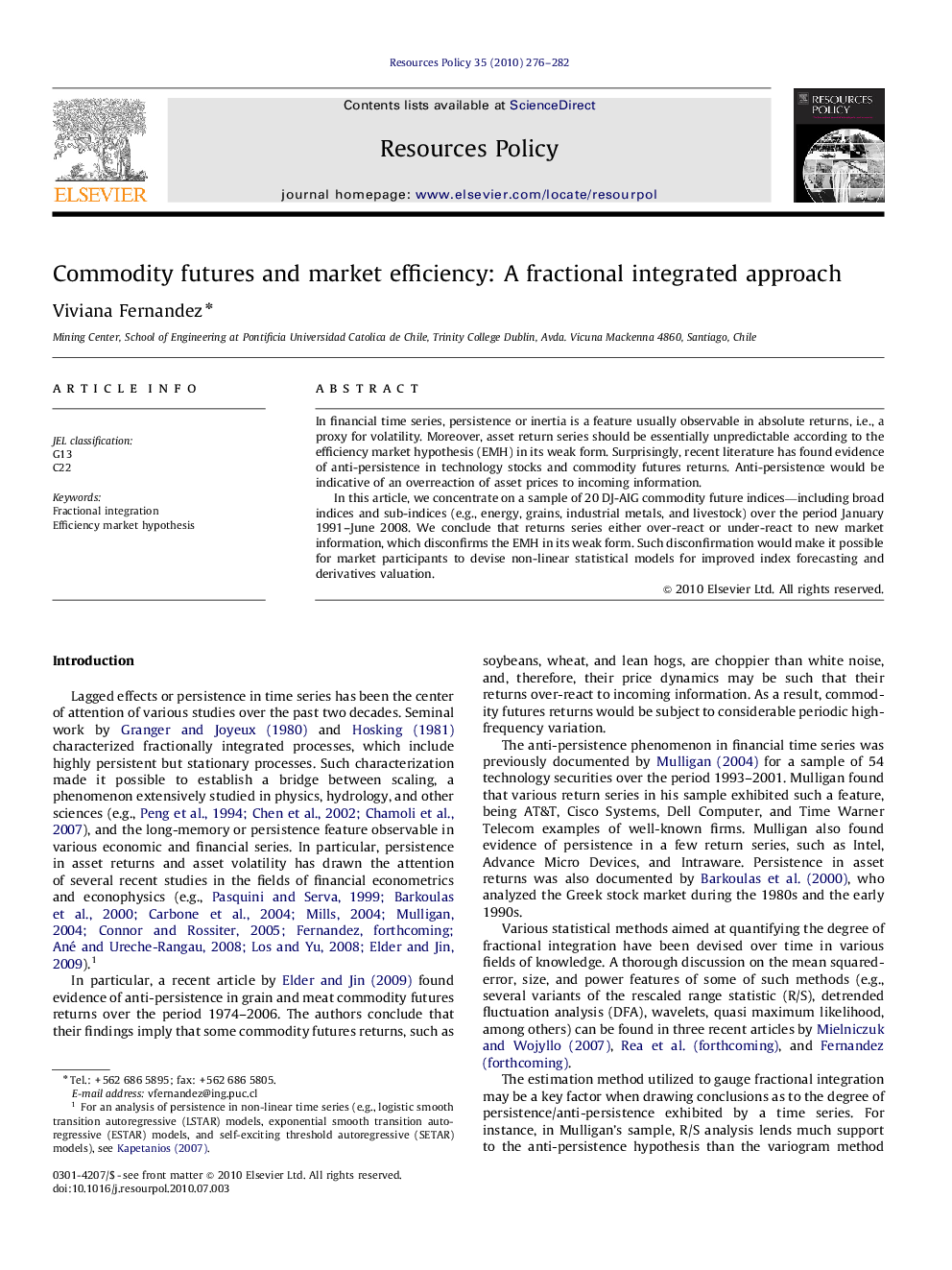| Article ID | Journal | Published Year | Pages | File Type |
|---|---|---|---|---|
| 985439 | Resources Policy | 2010 | 7 Pages |
In financial time series, persistence or inertia is a feature usually observable in absolute returns, i.e., a proxy for volatility. Moreover, asset return series should be essentially unpredictable according to the efficiency market hypothesis (EMH) in its weak form. Surprisingly, recent literature has found evidence of anti-persistence in technology stocks and commodity futures returns. Anti-persistence would be indicative of an overreaction of asset prices to incoming information.In this article, we concentrate on a sample of 20 DJ-AIG commodity future indices—including broad indices and sub-indices (e.g., energy, grains, industrial metals, and livestock) over the period January 1991–June 2008. We conclude that returns series either over-react or under-react to new market information, which disconfirms the EMH in its weak form. Such disconfirmation would make it possible for market participants to devise non-linear statistical models for improved index forecasting and derivatives valuation.
